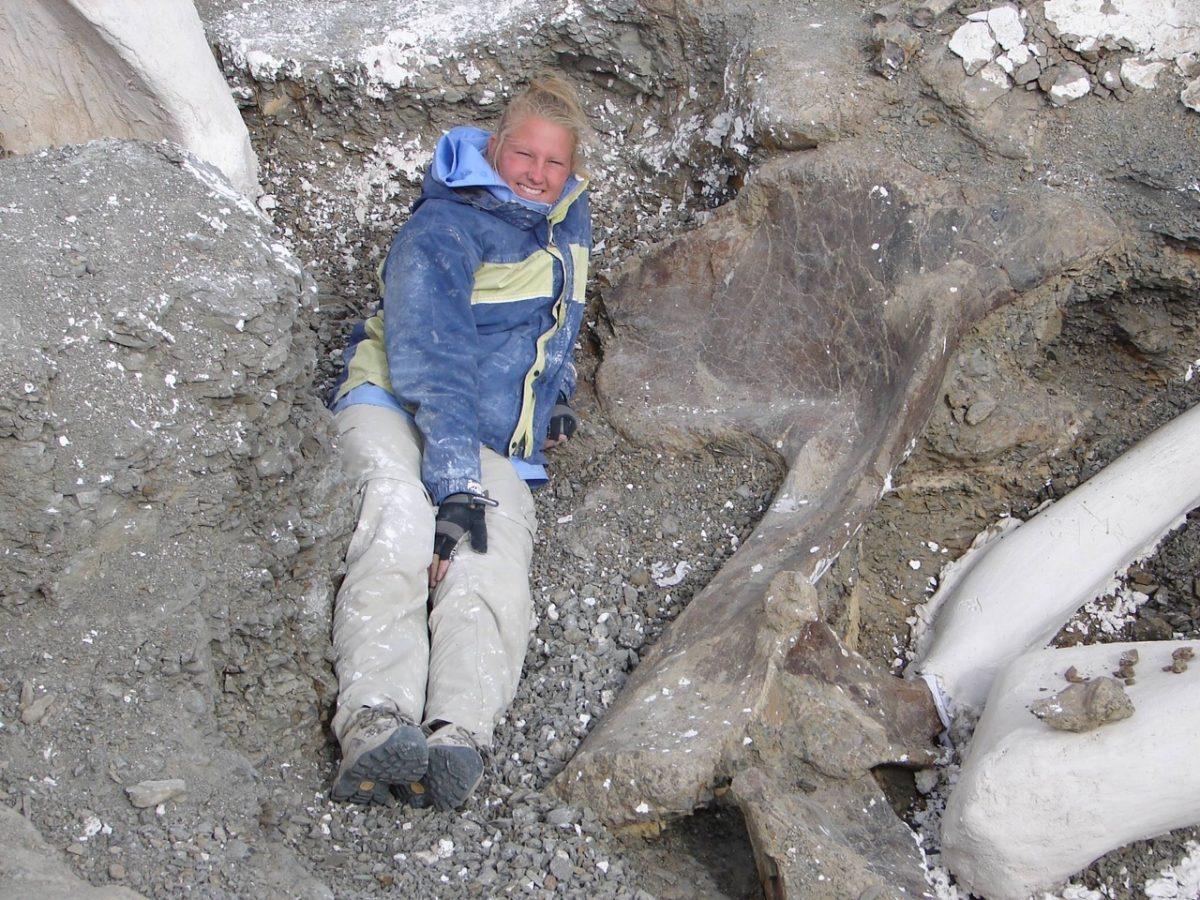An NC State student was part of an excavation team that uncovered dinosaur fossils from what could be the largest dinosaur ever to walk on Earth.
Alison Moyer, a graduate student in Zoology, found the dinosaur on a dig she participated in as an undergraduate student at Drexel University about nine years ago in Southern Argentina.
The dinosaur is the first of its kind ever found. After years of research, a team from Drexel announced earlier this month the bones came from a new species of dinosaur called Dreadnoughtus schrani.
According to Moyer, the team determined that the bones are from the largest dinosaur ever discovered. Although scientists estimate larger specimens may have existed, this dinosaur is the largest with enough determining factors, such as supporting limbs, to have a confident estimate of size.
“Scientifically, this dinosaur is pushing the limits of physiology,” Moyer said. “Before this, we weren’t able to look at the actual biology of how such massive dinosaurs moved and grew, and now we can start to do that. For me, it’s the reason why I’m here at NCSU. It’s what got me interested in paleontology early in my undergrad studies, and I’ve been studying fossils ever since.”
After the dig, Moyer said it quickly became apparent that the Dreadnoughtus was larger and more complete than most other skeletons of its kind.
“It was crazy to think that I spent nearly two months digging up just one bone,” Moyer said.
A rumor about the discovery of Dreadnoughtus has been circulating the Internet claiming that the skeleton is 70 percent complete. However, Moyer said this is only somewhat true.
Paleontologists measure completeness in two ways. The first compares how many bones have been found to the number of bones in the full skeleton.
The second type of completeness is measured by counting the types of bones found and determining how many of all the types of bones in a skeleton have been found.
By this measurement, if a human skeleton was discovered and one finger bone was found for the right hand, even though humans have five fingers, the skeleton would be considered to have a complete set of fingers because the type of bone has been found.
Dreadnoughtus is 45.3 percent complete based on the total bones that were found, and it is 70 percent complete based on how many types of bones have been found, according to Moyer
After being excavated, the bones were loaded into a cargo container, and the scientists had to wait almost two years to obtain permission to take the bones out of Argentina. The Argentinian government gave Drexel scientists a four-year “lease” for the bones to be studied and examined in the United States.
In September 2015, the bones will return to their permanent residence in Museo Padre Molina, a museum in Río Gallegos, Argentina.
Once in the U.S., the bones were split into three groups so they could be studied more quickly. One group went back to Drexel University, one went to the Museum of Natural Sciences in Philadelphia, and the other group went to Carnegie Museum in Pittsburgh.
Elena Schroeter, a grad student at Drexel while the bones were at the university, said she studied the bones Moyer helped excavate and wrote her dissertation about Dreadnoughtus.
“Because of its completeness, this discovery will allow us a wider window into the lives that sauropods used to have,” Schroeter said.
Schroeter said she discovered a key factor in determining that Dreadnoughtus was its own previously undiscovered specimen of sauropod, a classification of dinosaur with long necks, long tails and small heads. Schroeter found that the cervical bone was significantly different than that of the type of dinosaur Dreadnoughtus was originally thought to be.
Because of the bones’ limited time in the U.S., the Drexel scientists made 3D scans so researchers everywhere can study the bones, according to Moyer.








